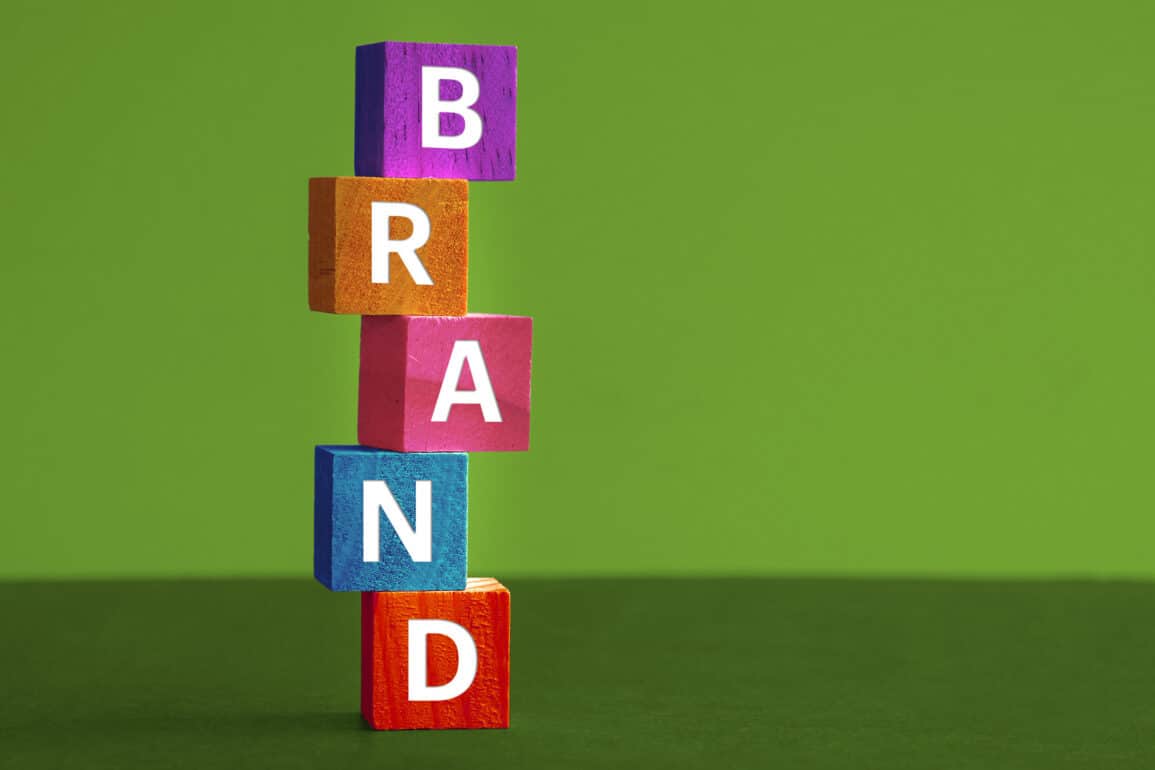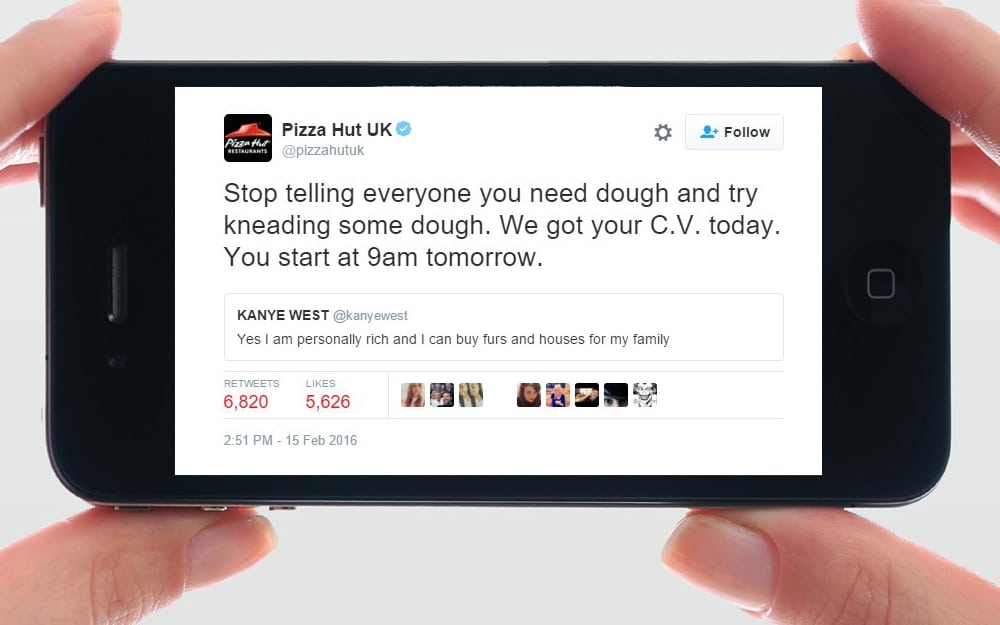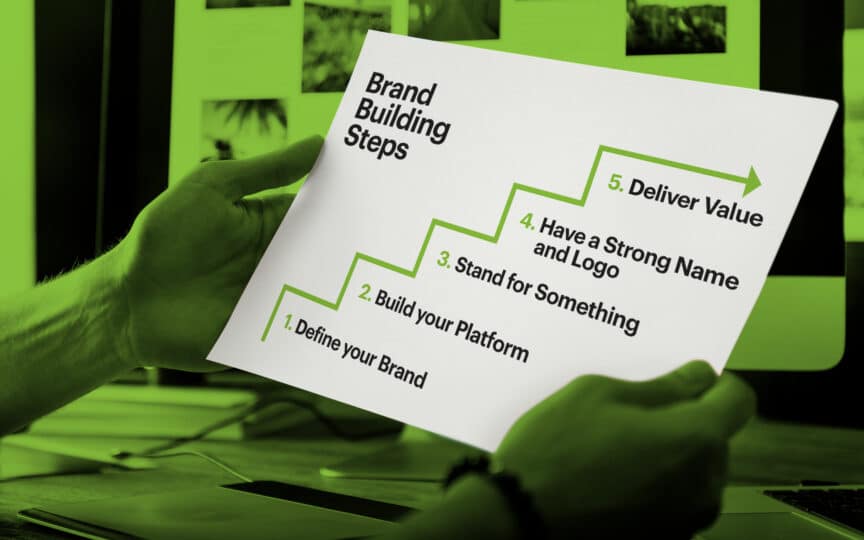Brand building 101: Building a brand (new, or old) on solid foundations

Whether you’re creating a new business from scratch, or you’re bringing an existing company to life with a greater focus on branding, building a brand that really stands out is no simple task. Brand building on solid foundations, by Steve Harvey.
You need to think about how your brand should look, how it should make people feel, what you can do to make it resonate with your target audience, and more. Whether you’re revitalising your existing brand, rebranding, or you’ve got nothing more than a basic idea in mind, you need to know how to connect the dots between your company, and the audience you’re trying to reach.
That’s where brand building comes in.
A brand isn’t just a recognisable logo and name that helps to distinguish you in a crowded market. Although those elements help, a brand is more holistic than you might think. It’s the culmination of all the experiences customers, and potential leads have with your company. A strong brand can communicate what your business does, how it does it, and why your customers should trust you above your competitors.
Your brand lives and breathes in your everyday interactions with customers, the decisions you make when applying colour and shapes to your website, the messages you post on your website, and the content of your marketing materials.
So, how can you start building a brand that really works?
The key elements of building a brand
For some companies, branding can seem like something that’s reserved for big-name enterprises, rather than small to medium size companies. However, branding is essential for any business that wants to make an impact on the marketplace.
Branding is your way of defining your business not just to your external audiences, but yourself and your team too. It’s about finding your identity, and how it relates to your business values, beyond what your brand looks and sounds like. With that in mind, here are a few of the things you should be thinking about before you get started:
1. Purpose
No matter how unique you believe your business to be, the truth is that there are countless other companies out there just like you. The only way to differentiate yourself, is to showcase your purpose as a brand. Think about what you’re trying to provide to your audience, then ask yourself “why” you’re waking up each day and going to work to meet those goals. Spoilers, the answer isn’t “to make a bunch of cash”.
As an example, look at IKEA’s “vision” on their website. They sell furniture, but they also want to “create a better everyday life” for their customers.

Your priority as a company may be to make money and thrive, but that’s not the purpose that will set you apart from the other competitors in your community.
2. Emotion
The average customer isn’t exactly rational. For instance, people will pay thousands of dollars more for a Harley Davidson bike, than a similar machine that does almost the same thing. The reason? Harley uses emotional branding that helps to develop a community for their brand. They allow their customers to feel like they’re part of a bigger family, and that’s a key part of their efforts in building a brand.
Brand building often relies on emotional connections, because human beings are inherently driven to create new relationships. For instance, psychology tells us that people have a basic underlying need to feel connected to others.
Think about how you can appeal to your customer’s emotional side, not just their logical needs.
3. Consistency
When it comes to building a brand that really works for you, it’s crucial to keep consistency in mind. Before you share anything on the behalf of your brand, think about what it will do to enhance your existing personality or voice. If the answer is “nothing”, then stop and start again.
For a great example of branding consistency, Coca-Cola really stands out. After all, it’s one of the most recognisable brands in the world. No matter the changes that they’ve made over the years, Coca Cola ensures that every element of their marketing works seamlessly with each other.

To ensure that potential customers don’t struggle to understand your brand building efforts, consider using a style guide throughout your company for absolute consistency.
4. Versatility
In a world that’s constantly changing, it’s important for businesses to be flexible if they want to be relevant. For instance, just because the brand you started building twenty years ago worked then, doesn’t mean it will work now.
While consistency is something that should set the standard for your brand, flexibility should give you the power to make changes that build more interest in your company, and distinguish you from your competitors.
Effective brand building programs need to maintain enough consistency to be identifiable, while keeping things fresh whenever possible. Look at Old Spice for instance. In the past, Old Spice was an “old fashioned” brand, but today, new websites, packaging, commercials, and products has created interest from a whole new generation.
5. Competitive awareness
Finally, building a brand that really works will always require some insight into what your competitors are doing. One of the best things that you can do for your company, is to look at the competition as a challenge to improve your strategy, and increase your brand building efforts.
Examine what your competitors do and tailor your own attempts based on their successes and failures. For instance, Pizza Hut have checked out what’s going on in the social media space and responded to the desires of their target audience by being humorous, active, and engaged.

By listening to what’s going on in their industry, and focusing on every element they need in building a brand, Pizza Hut could respond to their customers before Dominos ever had a chance to chime in.
Building a brand: Defining your essence
Alright, so you know what aspects you need to get started. Now you’re ready to begin really building a brand from scratch.
The first thing to note is that the word “brand” often creates thoughts of colours, logos, and products. However, as you saw in the section above, a brand is much more than that. Brand building means building a loyal base of fans who understand and resonate with everything you do and say.
Here are brand building steps you’ll need to follow, to create a brand that’s authentic, effective, and appealing to your customers.

Brand building step 1: Define your brand
First things first, you’ll need to decide “who” and what your brand is. It’s often best to think of your brand as a person when you’re getting started, as this will help you to determine a personality and strategy that your audience can connect with on a deeper, more emotional level.
Consider the service or product your business offers carefully, think about the space in the market you occupy, and research both the rational and emotional needs of your customers. From there, you can develop a brand character that promotes your business.
Just look at Apple, one of the most iconic brands of all time. Part of the reason for that is that Apple have an engaging story that’s all about innovation and thinking differently. When defining your brand, ask yourself what your story is, what do you do, that your competitors don’t?
Brand building step 2: Build your platform
Once you’ve decided what your story or differentiator is, you’ll need to share it with the world through the correct platform. For most businesses, it’s a good idea to begin with a website, that you can grow with podcasts, videos, content, and social media networks.
When building your platform, remember:
- Be authentic and unique.
- Build a list of key customers for email purposes.
- Invest in memorable design.
- Stay consistent.
While “what” you say on your brand platforms will always be important to building a powerful brand, remember that you shouldn’t overlook how you say it. Remember that successful brands know how to speak with a unique voice.
Brand building step 3: Stand for something
Take a moment to think about all the brands you love. Most of the time, we love companies because they stand for (or against), something that we can relate to. For instance, the bath and body brand “Lush”, connects with its customers through its strong ethical approach to business. Lush customers will pay more for products from that specific brand, because they know they’re supporting the protection of animals, and other crucial morals.
When building a brand for your customers, think about what your audience believes in, and what your company should believe in as a result. This will help you to establish your emotional position, and inform the character of your company for the future.
Brand building step 4: Have a strong name and logo
While a name and logo won’t make up the complete essence of your brand, they’re important issues to think about. A strong brand should be easily recognisable, and recognition starts with the name of your company. Your name will appear on everything from your website, to your social networks, your products, and marketing campaigns.
At the same time, it’s not enough to just have a recognisable name. People will frequently associate brands with their logo design. As you consider your logo, keep the products and services that you create, and the needs of your audience in mind. A good logo not only defines what your company does, but also helps to build trust and pull the different elements of your brand together.
Brand building step 5: Deliver value
“Value” is something that all businesses need to think about when building a brand. Importantly, value doesn’t just come down to the price of your brands. You can focus on leadership in your market, by having the best products in your industry. On the other hand, you might consider operational excellence, by delivering great products for a low price. Some businesses even define their brand by offering exceptional customer service that their clients love.
As you think about the value that your brand can deliver, think about what sets your company apart from other names in your industry. Think about the benefits that you can provide that tap into the emotions of your customers.
The next step in brand building: Empowering your customers
Remember, you’re not necessarily in control of your brand. While you can set the direction of your brand, how your company will be perceived is something that is determined by customers and other potential clients in the future.
With some careful attention to brand loyalty, it’s possible for companies to transform their users into brand ambassadors – unique individuals who spread ideas about your brand to new networks. Think about what you can do to develop your relationship with your customers, and transform them not just into repeat sales, but advocates for the brand you’re building.
Empowering your customers is an essential part of building a brand that continues to grow for the foreseeable future. After all, the branding process comes down to your ability to form emotions, memories, and lasting relationships between your company, and your customer.
So, how can you empower your customers with your brand?
1. Brand your audience
First things first, a lot of branding experts recommend creating a branded term to use when referring to your customers and employees. Think about your user personas, and how you can identify them. This will help you to create loyalty among customers by making them feel as though they’re part of a specific “tribe”, or following. Welcome each new customer into your tribe, and show them that being a part of your brand is something valuable.
2. Reward and delight
Today, a lot of different brands use rewards programs to help encourage ongoing business from their clients. However, a better way to make a real impact on your customers is to establish a program for random acts of kindness. In other words, give your customers unexpected gifts and rewards.
Rather than providing rewards completely at random, try to identify your most enthusiastic and active customers, and send them something that rewards them for being such avid customers. This will help you to identify and enrich your brand advocates.

3. Don’t be “too” digital
The technology available today means that keeping your communication strategies totally digital is easier than ever. You can connect through email campaigns, and social media to keep your audience engaged. The only problem is, you’re missing the chemicals of a personal interaction.
When we connect with someone face-to-face, our brain releases Oxytocin, which is the chemical that helps to create emotion and memory. Personal interactions through phone calls, direct mail, and even events can help you to build stronger relationships with the customers you want to help you in building a brand.
4. Remember to personalise
Finally, when it comes to brand building, personalisation has never been more important. Everyone loves to feel as though they’re something special, and tailoring your brand experience around individual customers and ideas can help to ensure deeper branding connections.
If you start to personalise everything you do from the moment you begin building a brand, you’ll find it’s much easier to segment your audience and offer more engaging marketing and communication solutions as your company continues to evolve.
Brand building strategies: Using the latest media
It’s safe to say that brand building has always been an important consideration for any company. However, it’s never been more essential than it is today. Thanks to the growth of the internet, your new and existing customers are constantly being flooded with dozens, or even hundreds of new buying opportunities and companies they can interact with.
By accessing the latest media, from social platforms, to websites, video marketing, and more, it’s possible to improve your brand building experience, and develop something truly innovative and long-lasting. Here are some of the best brand building strategies to get you started:
Building a brand: Blog and use content (a lot)
While you can begin building a brand on your website, and hope that customers recognise what you stand for when they read your product descriptions and “about” pages, it’s much easier to make an impact when you’re creating unique, valuable content.
The more content you produce on the behalf of your brand, from blogs, to podcasts, and more, the more popularity you’ll build for your company. Not only will your customers appreciate your brand, but you’ll start to develop your presence online with greater SEO rankings and social media followings.
Over the years, blogging alone has developed into a marketing solution that delivers 126% more leads, 434% more indexed pages, and 55% more visitors.
Building a brand: Be where your audience is
Speaking of social media, it’s one of the most highly-leveraged brand building strategies currently available today. Companies of all shapes and sizes are recognising the benefits of Twitter, LinkedIn, Facebook, and YouTube.
Social media allows you to build on relationships that every audience member wants to create with their favourite brand. Because these platforms are inherently personal and emotional, they allow you to develop something special with your audience through regular messages, updates, and even excellent customer service.
While other forms of networking may still be important, a social media strategy can be an essential element of brand building for any modern company.

Building a brand: Monitor the conversation
When you’re building a brand, it’s important to make sure that you’re not just blindly pushing a certain perspective without taking audience opinions into account. Whatever people are searching for when it comes to looking for your company on Google or social media, indicates what they think about it – as well as any problems they might have.
Monitoring what people are looking for, and where your website ranks for different searches in the results pages is crucial. There are plenty of tools and pieces of software out there that can help you do this. Even if you find out that the perception of your brand is largely negative, your active approach will help you to rectify the issue before it goes too far.
Building a brand: Work with prestigious partners
Beginning a partnership with various authoritative organisations and influencers is a great strategy for building a brand that resonates with your audience. Whether you’re starting your brand from scratch, or improving your existing branding efforts, the right partnerships can open you up to new customers and a better reputation.
While it’s tempting to think of every other organisation as competition in today’s marketplace, it’s worth noting that piggybacking off the influence of other people is a great way to give your branding efforts the boost they need. Think about how you can use partnerships to grow and evolve your company, and make your brand reputation even more pervasive.
Building a brand: Offer a real omni-channel experience
Finally, remember that no matter what you do, your brand building efforts should be seamlessly integrated from one channel to the next. Your customers should be able to expect the same experience regardless of whether they’re interacting with you in-store, over social media, through a podcast, or on your online blog.
Today’s customers expect that no matter where their interactions take place, they’ll be able to enjoy the same personalisation, personality, customer service, and benefits. Take the time to make sure that your communications are fully integrated throughout all channels.
Building a brand: When in doubt – hire out
Building a brand is tough.
Building a brand that really works for your company is even tougher.
Over the years, your brand will go through a range of changes, growing in strength, or receding with the times. In the branding cycle, new changes, circumstances, and events can present a range of opportunities and challenges that allow you to re-establish yourself, develop, and grow.
The important thing for companies to remember is that brand building isn’t a one-off thing. You’ll need to define your brand, differentiate it, showcase it to the world, and even review what you stand for every now and again.
In a world where your brand is the only thing that can really set you apart from your competitors, if you’re not sure that you can create something truly solid on your own, then you may need to employ someone who can.
Branding is a constant effort that gets reinforced with every move you make. Sometimes, simply making sure that you start off on the right foot with professional branding experts can save you from years of confusion, heartache, and lost profits.
At the end of the day, it’s up to you to decide how much being memorable, unique, and relatable really means to you.
If you enjoyed this article, you might enjoy these too:
— Building relationships with brand affinity
— Reasons to consider influencer marketing











